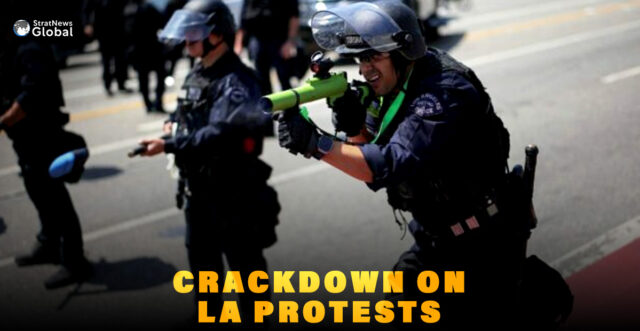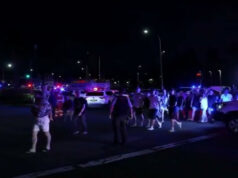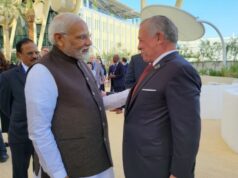During the clash with crowds protesting the federal immigration raids, law enforcement officials in Los Angeles (LA) began deploying “less lethal” weapons on Sunday.
“Less lethal” or “less-than-lethal” weapons are designed to cause pain and discomfort, normally to disperse hostile crowds, but have caused serious injury and death in the past.
Here is a list of the less lethal weapons that have been deployed in Los Angeles in recent days, according to Reuters witnesses and the Los Angeles Police Department (LAPD).
Sponge Rounds
Media outlets and a reporter hit in the leg by a projectile on Sunday have said LAPD officers have been firing rubber bullets, a metal casing covered in rubber.
In fact, the LAPD does not use rubber bullets, the department told Reuters.
Instead, the LAPD uses foam rounds, a condensed sponge projectile that resembles a hard Nerf ball.
One version, which has a plastic body with a hard foam nose, is fired from a 40mm launcher and usually aimed directly at a target.
A second version, fired from a 37mm launcher, disperses five foam baton rounds toward the ground in front of a hostile crowd once an unlawful assembly has been declared, before bouncing up into the crowd.
It is not to be fired directly at individuals, the LAPD said.
Both are designed to cause pain on impact without penetrating the skin. Police are forbidden from aiming sponge rounds at the head, neck, groin, and spine.
Bean Bag Rounds
Bean bag rounds are normally 37 mm cloth bags filled with 1.4 oz of lead or rubber pellets. They are fired from shotguns and spread out as they fly toward the intended target.
They are designed not to penetrate the skin but to cause an impact hard enough to render a target temporarily immobile.
Flash Bangs
Flash bangs, otherwise known as “distraction devices” or “noise flash diversionary devices”, produce an ear-piercing bang and bright light to disorient targets by temporarily disrupting their sight and hearing.
They are often used to target protesters who have become violent in a section of a crowd, and also to allow police to enter a section of a crowd to extract offenders.
One type of flashbang device that has been used in Los Angeles is the 40mm aerial flashbang. These are launched into the air and ignite above the heads of protesters.
Tear Gas
Tear gas, one of the most common riot control tools, is designed to temporarily incapacitate people by causing excessive irritation to the eyes, nose, lungs, and skin. It can cause temporary blindness, streaming eyes and nose, coughing, chest tightness, and difficulty breathing.
Tear gas canisters usually contain CS gas, a chemical compound, or OC gas, which stands for oleoresin capsicum, the active ingredient in pepper spray.
Pepper Spray
Pepper spray, which has similar impacts as tear gas, is sprayed from a handheld canister and is often used when police come into close quarters with rioters or are engaged in hand-to-hand encounters.
It mainly irritates the eyes, causing temporary blindness.
Known as the oldest less lethal weapon, the baton has been used for crowd control for decades. Police officers have been using batons to push and strike protesters in recent days.
(With inputs from Reuters)





